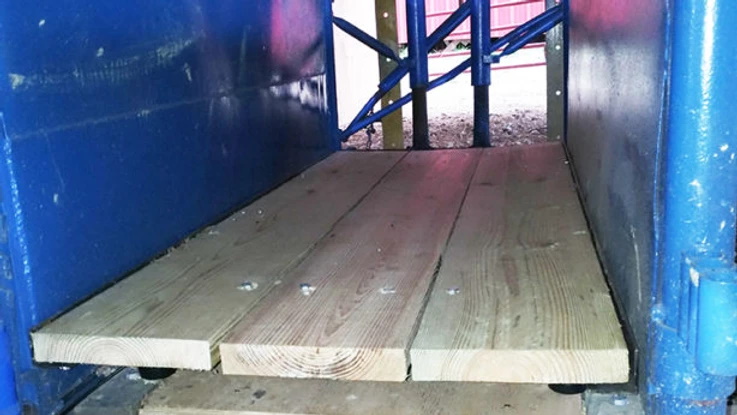By Greg Dike
About three months ago one of my bulls who just turned two years exhibited the following: Acting lazy, didn’t seem to be putting on weight, and was panting more than he should have been. The first thing I did was weigh him and discovered that he had lost a few pounds since I had weighed him the previous month. That was the first clue something was possibly wrong. One weight measurement isn’t conclusive so a monitored him every couple days and saw a steady weight loss. After taking his temperature, which was 104.6, and describing the symptoms I called the our veterinarian who said it was pneumonia (common for this time of year) and told me what to give him.
I pulled him into a pen behind the barn where I could monitor him. His temperature went down two degrees the first day and his weight stabilized. The next day his temperature was only a degree above normal and he had actually gained a pound. The veterinarian was happy with the results and said to put him back in the pasture, which I did.
After two days he was dragging around and when I weighed him he had lost more weight. His temperature was up again as well. One of the issues we face in Kentucky is that most pastures have fescue. Fescue is a great grass but unless it is endophyte free, which old fescue pastures aren’t, it can cause all kinds of problems with cattle. Now I have never had any problems with my yaks on my pastures and this bull was raised on my pastures. But I wondered if perhaps for some reason the fescue was the issue even though he didn’t exhibit the more classic symptoms other than the panting and temperature. So, what I did was to put him in a pen and give him hay which didn’t have fescue in it and monitor his weight and temperature – no medications. After two days he was gaining weight and his temperature was good. After five days he had gained over ten pounds and had a nice “healthy look”. I put him back in the pasture and within three days he was as bad as he had been before: especially the weight loss – and he was grazing normally. Conclusion: Not pneumonia but a developed intolerance to fescue even though eighty other yaks are on the same pasture system and gaining weight.
The key “tool” in determining what was wrong was the scale. Without it I would probably have had a dead yak.
Weight loss and/or lack of weight gain is a key indicator of a health problem. The capacity to regularly measure a yak’s weight as it matures is the fundamental way to determine if a nutrition program is sufficient. Many medicines or supplements are weight-based dosages. Many breeders use Multi-min several times a year. Multi-min dosage is weight based, and too much Multi-min can be toxic. Are we weighing our yaks before giving injections or just guessing. Are our yaks gaining properly or are we just guessing? And when it comes time to breed a heifer for the first time, are we sure it is big enough?
Health care and management can only be improved with a scale. The problem has been that they are expensive. The first one I bought after shopping around was just over $1000: Not cheap. But I bought it and it was worth every penny.
There is a cheaper way. Build you own scale. I just built one for just over $250 and I don’t weld. It turns out if you look on e-bay you can find the hardware and electronics for a 2000 scale for about $190.


All you need to do is build the platform. If you have welding equipment you can weld a frame and platform. I don’t weld and simply built a platform with a metal frame (bolted together) and a two-inch thick wood platform. The only tools required were:
- Circular saw with metal and wood cutting blades;
- Drill with a ½” and 3/8” metal bits;
- Tape measure and square;
- ½” and 3/8” wrenches; and a
Beyond purchasing the scale kit I needed:
- Three 2 x 10 x 5 foot pressure treated boards;
- Two five foot pieces of angle iron;
- Two 25 inch pieces of channel steel;
- A number of 3/8” and ½” bolts, washers and nuts; and
- Pipe hangers to “hold the excess scale electrical wire against the bottom of the platform.

I had purchased an old squeeze chute which I cleaned up and mounted on a three point hitch carrier platform so I could pick it up with the tractor and move it to the fields rather than moving the yaks through multiple pastures to the barn where a stationary squeeze chute and scale are located.
I can rent 25 corral panels for a weekend for $25 from the Conservation District Office so it is easy to set up a handling facility to work on yaks in a particular pasture: weigh them for growth rate and health information, give medications, comb them etc.
The nice thing about the home built scale with a wood platform is that I can move it alone with some effort. The steel expensive scale requires two strong people…and then is painful. The scales electronics have a rechargeable battery built into the control unit and actually so you can work in the field away from power.
If you really want to know what is going on with your heard in terms of health, growth, and for breeding decisions, add a scale to your health care/handling facilities. $250 and a couple hours time will pay off with one weight based health intervention and allow you to know what is really going on in your herd.


